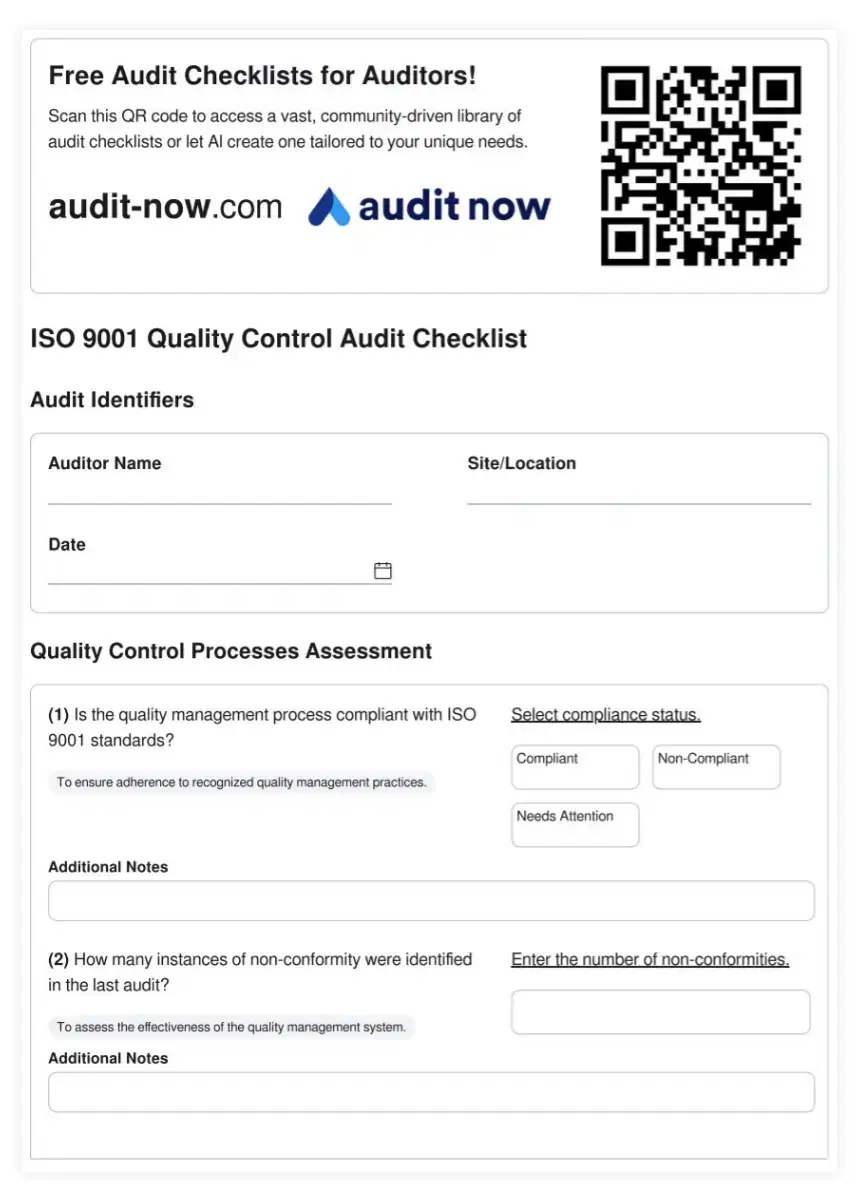IT Operations Center: Powering Digital Infrastructure

Featured Checklist

ITIL Availability Management Audit Checklist
The ITIL Availability Management Audit Checklist is a crucial tool for IT professionals and organizations implementing ITIL best practices in their availability management processes. This comprehensive checklist ensures that IT services are designed, implemented, and maintained to meet agreed-upon availability levels. By addressing key areas such as availability planning, monitoring, measurement, and improvement, this checklist helps organizations optimize service uptime, minimize downtime, and enhance overall IT service reliability and resilience.
Understanding IT Operations Centers
An IT Operations Center serves as the nerve center for managing and monitoring an organization's technology infrastructure. It plays a crucial role in ensuring smooth operations, minimizing downtime, and responding to incidents promptly. IT Operations Centers typically oversee various aspects of technology, including networks, servers, applications, and security systems.
Key responsibilities of an IT Operations Center include:
- 24/7 monitoring: Continuous surveillance of IT systems to detect and address issues
- Incident management: Rapid response to and resolution of IT-related problems
- Performance optimization: Ensuring systems operate at peak efficiency
- Capacity planning: Forecasting and managing IT resource needs
- Change management: Coordinating and implementing system updates and modifications
Core Audit Requirements for IT Operations Centers
Auditing IT Operations Centers is essential to maintain operational excellence and ensure compliance with industry standards. Key audit requirements include:
1. Infrastructure Assessment
Evaluate the physical and virtual components of the IT infrastructure, including servers, networks, and storage systems. Ensure they meet performance, security, and reliability standards.
2. Process Evaluation
Review operational processes such as incident management, change control, and problem resolution. Verify that these processes are well-documented, followed consistently, and align with best practices.
3. Security Controls
Assess the implementation and effectiveness of security measures, including access controls, data protection, and incident response procedures.
4. Compliance Verification
Confirm adherence to relevant industry regulations and standards, such as ITIL, ISO 27001, or COBIT.
5. Performance Metrics
Analyze key performance indicators (KPIs) to gauge the efficiency and effectiveness of IT operations. This may include metrics like system uptime, incident resolution times, and service level agreement (SLA) compliance.
Importance of Checklists for IT Operations Excellence
Checklists play a vital role in maintaining operational excellence within IT Operations Centers. They provide numerous benefits:
Consistency: Checklists ensure that all necessary steps are followed consistently, reducing the risk of human error and oversight.
Efficiency: By providing a clear, step-by-step guide, checklists streamline processes and save time.
Knowledge transfer: Checklists serve as valuable training tools, helping new team members quickly learn and adhere to established procedures.
Compliance: They help ensure that all regulatory and industry standard requirements are met during audits and daily operations.
Continuous improvement: Regularly updated checklists can incorporate lessons learned and best practices, driving ongoing optimization of IT operations.
Stay Audit-Ready Anytime
Use our mobile-friendly platform to conduct audits on the go!
Try now!
Best Practices for IT Operations Center Audits
To conduct effective audits of IT Operations Centers, consider the following best practices:
1. Develop Comprehensive Audit Plans
Create detailed audit plans that cover all aspects of IT operations, including infrastructure, processes, security, and compliance. Tailor these plans to your organization's specific needs and regulatory requirements.
2. Use Standardized Checklists
Implement standardized checklists for various audit processes to ensure consistency and thoroughness. Regularly review and update these checklists to reflect changes in technology and industry standards.
3. Leverage Automation
Utilize automated tools and systems to collect data, monitor performance, and generate reports. This can significantly improve the efficiency and accuracy of audit processes.
4. Conduct Regular Self-Assessments
Encourage IT teams to perform regular self-assessments using audit checklists. This proactive approach helps identify and address issues before they become significant problems.
5. Foster a Culture of Continuous Improvement
Use audit findings as opportunities for learning and improvement. Implement a feedback loop to incorporate lessons learned into operational processes and future audit plans.
Streamline Your IT Operations Center Audits with Audit Now
Audit Now offers a comprehensive digital solution designed to revolutionize your IT Operations Center audits. Our platform provides:
AI-powered checklists: Tailored to your specific IT operations needs, ensuring thorough and efficient audits.
Real-time collaboration tools: Enable seamless communication and coordination among audit team members.
Automated reporting: Generate detailed, professional reports with just a few clicks.
Extensive template library: Access a wide range of pre-built templates specific to IT Operations Center audits at https://audit-now.com/templates/.
To get started with Audit Now, simply visit our website and sign up for an account. You'll gain immediate access to our powerful platform, including our AI-powered checklist generator at https://audit-now.com/generate-ai-checklist/. Our user-friendly interface and intuitive design make implementation a breeze, allowing you to streamline your IT Operations Center audits while maintaining the highest standards of accuracy and compliance.
Experience the future of IT Operations Center auditing with Audit Now – where efficiency meets excellence.
Most Popular 10 IT Operations Center Checklists
COBIT IT Service Management Audit Checklist
ITIL Incident Management Audit Checklist
ITIL Availability Management Audit Checklist
CMMI Process Area Audit Checklist
ITIL Change Management Audit Checklist